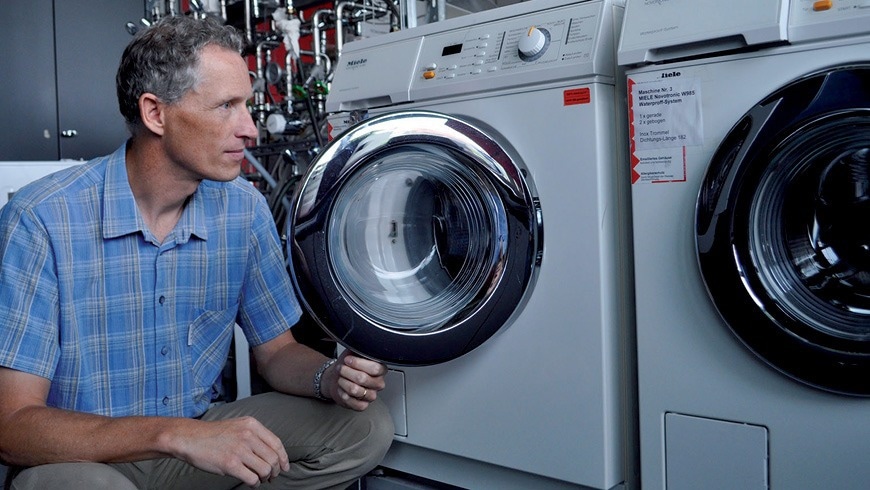Empa researchers have recently demonstrated that some nanoplastics are made up of water-insoluble oligomers rather than plastic particles. The consequences they have on people and the environment are not yet fully understood.
 Researchers led by Bernd Nowack have investigated the release of nanoparticles during the washing of polyester textiles. Image Credit: Empa
Researchers led by Bernd Nowack have investigated the release of nanoparticles during the washing of polyester textiles. Image Credit: Empa
Microplastics are particles smaller than five millimeters in size that can enter the environment undetected. A small percentage of these particles are so tiny that they are measured in nanometers. Such nanoplastics are the topic of much investigation, as nanoplastic particles can be absorbed into the human body due to their small size; yet, nothing is known about their potential toxicity.
Empa researchers from Bernd Nowack's department at the Technology and Society laboratory have now collaborated with colleagues from China to investigate nanoparticles emitted by textiles.
Tong Yang, the study’s first author, conducted the tests while pursuing his PhD at Empa. Empa researchers have previously demonstrated that microplastics and nanoplastics are released when polyester is washed. A thorough investigation of the released nanoparticles has revealed that not everything that looks to be nanoplastic on first inspection is in fact nanoplastic.
To a large degree, the released particles were clusters of so-called oligomers, which are small to medium-sized molecules that exist between long-chained polymers and their individual building parts, monomers. These molecules are smaller than nanoplastic particles, and barely anything is known about their toxicity. The researchers reported their findings in the journal Nature Water.
For the study, the researchers looked at twelve different polyester materials, including microfiber, satin, and jersey. The fabric samples were washed up to four times, and the nanoparticles produced during the process were examined and described. According to Bernd Nowack, this is not a simple process.
Plastic, especially nanoplastics, is everywhere, including on our devices and utensils. When measuring nanoplastics, we have to take this ‘background noise’ into account.
Bernd Nowack, Professor, Empa-Swiss Federal Laboratories for Materials Science and Technology
A Large Proportion of Soluble Particles
To discriminate between nanoplastics and oligomer clumps, the researchers utilized an ethanol bath. Plastic pieces, regardless of size, do not dissolve in ethanol, however, oligomer aggregations do. As a consequence, around one-third to almost ninety percent of the nanoparticles produced during washing were soluble in ethanol.
“This allowed us to show that not everything that looks like nanoplastics at first glance is in fact nanoplastics,” Nowack noted.
It is unclear if the emission of so-called nanoparticulate oligomers during textile washing harms individuals or the environment.
Nowack stated, “With other plastics, studies have already shown that nanoparticulate oligomers are more toxic than nanoplastics. This is an indication that this should be investigated more closely.”
However, the researchers were able to determine that the type of textile and the cutting method (scissors or laser) have no significant effect on the number of particles emitted.
The method of release has not yet been determined, either for nanoplastics or oligomer particles. The good news is that the number of particles discharged drops significantly with subsequent washing. The oligomer particles might be formed during textile manufacture or separated from the fibers during storage by chemical procedures. Further research is also needed in this area.
For the time being, Nowack and his colleagues are concentrating on larger particles. Their next research will look at the fibers that are produced during the washing of textiles manufactured from renewable raw materials and whether or not they could be hazardous to human health or the environment.
Nowack concluded, “Semi-synthetic textiles such as viscose or lyocell are being touted as a replacement for polyester. But we don't yet know whether they are really better when it comes to releasing fibers.”
Journal Reference:
Yang, T., et. al. (2024) Oligomers are a major fraction of the released submicrometre particles released during washing of polyester textiles. Nature Water. doi:10.1038/s44221-023-00191-5